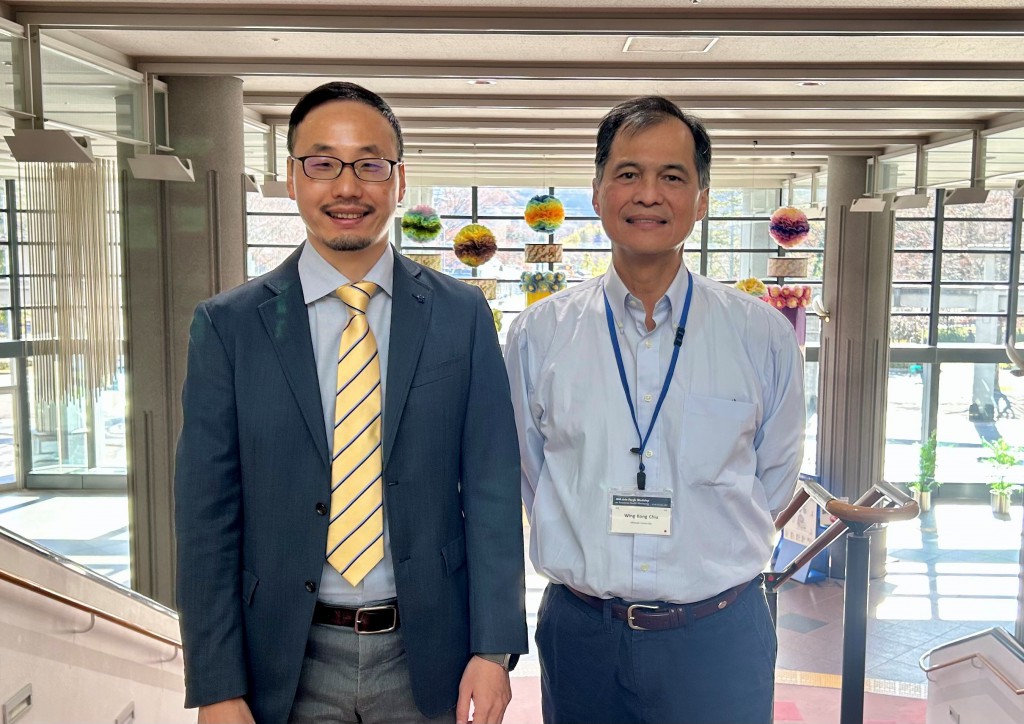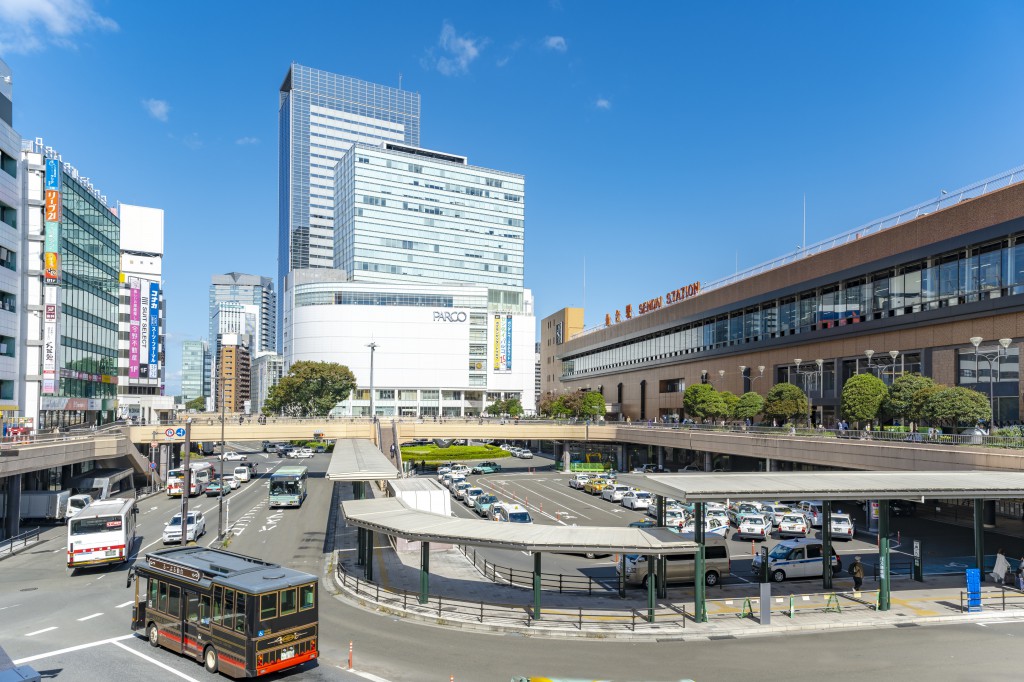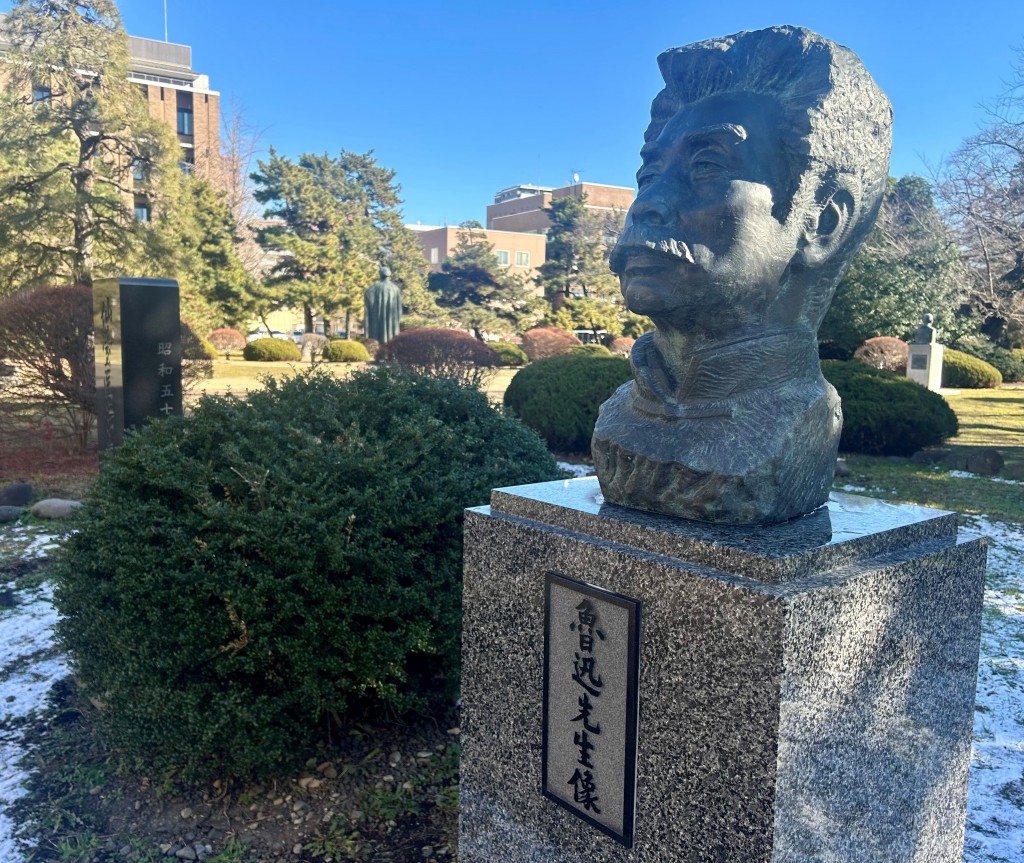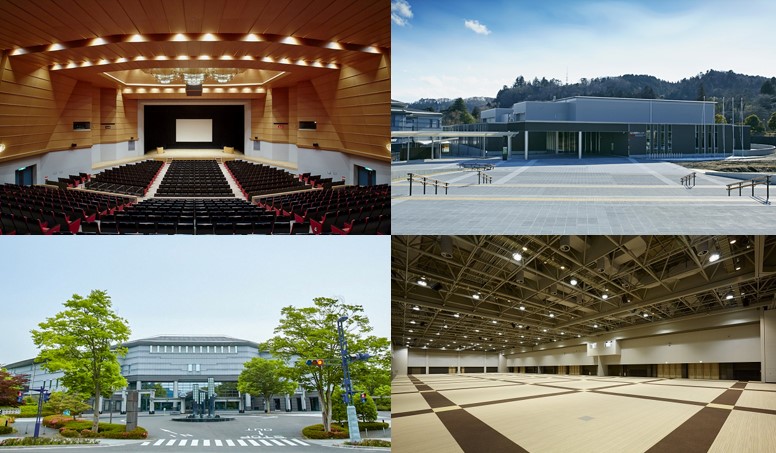The 10th Asia-Pacific Workshops on Structural Health Monitoring (APWSHM 2024) took place in Sendai, Japan, from December 8-10, 2024, at the Sendai International Center. With about 200 participants, including 150 international attendees from 10 countries, the conference provided a global platform for discussions on innovations and challenges in civil, maritime, and aircraft structural monitoring. The event was a collaboration between the Tohoku Institute of Technology (Sendai), Tohoku University (Sendai), and Tongji University (China).
As part of the Sendai Convention Bureau’s ongoing efforts to gather feedback and improve services for international conferences, we had the pleasure of interviewing two key figures behind APWSHM 2024: Prof. Liyu Xie from Tongji University, China, and Prof. Wing Chiu from Monash University, Australia.

Prof. Liyu Xie (left) and Prof. Wing Chiu (right) inside the Sendai International Center (Photo courtesy of Sendai Convention Bureau)
The last time this event was held in Japan was in 2010 in Tokyo. Since then, the conference has rotated among other Asia-Pacific destinations, including China, Hong Kong, and Australia. Sendai’s selection as the host city for APWSHM 2024 was driven by its strong academic presence and the region’s well-established research community in the field of structural health monitoring. Prof. Songtao Xue, a Professor at the Tohoku Institute of Technology and the Research Institute of Structural Engineering & Disaster Reduction at Tongji University, played a pivotal role in bringing and supporting the event in Sendai. It was thanks to him that we were able to interview Prof. Xie and Prof. Chiu, who have known each other for years, having met at previous conferences.
Prof. Chiu summarized, “Sendai’s compactness and accessibility were key advantages for hosting this conference. Unlike other big cities, where everything is spread out, Sendai offers a home-away-from-home atmosphere. The short commute between the conference venue and the city centre allows one to easily blend in with the locals. The city has everything you need for both business and leisure, often within walking distance. In addition, the shinkansen bullet train makes travel from Tokyo to Sendai quick and easy, with the smooth 90 minutes ride serving as a testament to the efficiency, reliability and punctuality of the Japan’s renowned train system that I often hear and read about in the media.”

The area surrounding Sendai Station offers a wide range of shopping and dining options, and is home to the start and end points of the LOOPLE Sendai sightseeing bus (pictured). It also features a pedestrian deck that provides an easy bypass of the bus and taxi pools. (Photo courtesy of Sendai Convention Bureau)
“Sendai is easy to get around and offers the atmosphere of a big city combined with the tranquility of a peaceful town,” says Prof. Chiu. Home to over one million people, Sendai is the largest city in northeastern Honshu, Japan’s main island. This region, known as Tohoku, comprises of six prefectures. Despite its size, Sendai’s compact, vibrant, yet calm city center makes it exceptionally easy to explore and navigate.
Prof. Xie lived in Tokyo for a certain time several years ago, and had visited Sendai a few times before, often with his trips to Zao ski resort just south of Sendai. “I’ve visited Sendai many times and have always been impressed by the friendly people and warm hospitality,” he shared. “Once, when I got lost in the city, a local person walked me all the way to my hotel. Another time, when my hotel reservation was canceled due to a late arrival caused by bad weather, the hotel staff immediately arranged a room for me at no extra charge.” These personal experiences shaped his positive perception of the city and its people.
Prof. Xie noted cultural differences between Japan and China, reflecting on both the shopping and food culture. “In China, trends change quickly, and stores constantly update to reflect new flavors or interests. In contrast, Japan’s shops tend to stay around for a long time, giving a sense of familiarity for repeat visitors.” Prof. Xie already has a few favorite locations he frequents when visiting Sendai.
Prof. Xie also mentioned the legacy of Lu Xun, a significant Chinese literary figure who studied at Sendai Medical College (the precursor to today’s Tohoku University) in 1904. This important connection between Sendai and China is one that all conference participants from China will know well. Lu Xun’s life in Sendai is a fascinating part of the city’s history, and there are several sites related to him that offer a chance to explore his story.
ICPE 2024 was hosted at “Centersquare” on Tohoku University’s Aobayama Campus, conveniently located just a 9-minute subway ride on the Tozai Line from Sendai Station to Aobayama Station, followed by a 6-minute walk from the subway exit. Attendees praised the campus’s functional yet scenic environment, with Professor Mizutani also commenting on the tree-lined streets and lush greenery integrated into the campus design—a perfect reflection of Sendai’s identity as the “City of Trees.”
Professor Sato highlighted practical advantages of hosting the conference on-campus, such as cost-effective facilities, excellent public transportation access, and on-campus dining options, including a large cafeteria, cafes, and convenience stores. He also noted the value of showcasing Tohoku University’s facilities to a global audience.

A bust of Lu Xun, located inside the Katahira Campus of Tohoku University—where he studied over a century ago—continues to attract international admirers and inspire generations of students to dream big. (Photo courtesy of Sendai Convention Bureau)
The conference sessions were held at the Sendai International Center, conveniently located just a 5-minute subway ride from the city center. As the city’s premier convention venue, the center boasts a conference wing featuring a 1,000-person main hall, three floors of versatile breakout rooms, and the popular “Sakura Room”, ideal for large receptions. The Sakura Room offers stunning views of the surrounding greenery and glimpses of the picturesque Hirose River.
Adjacent to the conference wing is the Exhibition Wing, connected by a second-floor bridge. Completed in 2015, this modern space spans 3,000 square meters and can accommodate over 2,000 theater-style seats or be divided into five sections, along with additional breakout rooms. The two wings are frequently booked together, offering seamless flow and convenience for large events. Combined, the center can accommodate up to 6,000 people.

The Sendai International Center includes spacious halls, breakout rooms, and a dedicated exhibition area, making it suitable for both small and large events. (Photo courtesy of Sendai Convention Bureau)
The convention center’s location is another highlight, nestled among cultural and natural attractions such as the Sendai Castle ruins, Sendai City Museum, Miyagi Museum of Art, Tohoku University Botanical Gardens, and lush greenery that underscores Sendai’s nickname, the “City of Trees.”
The venue, with its spacious and suitable facilities, was ideal for both educational sessions and networking opportunities. Participants had ample time to connect, collaborate, and enjoy the social atmosphere during coffee breaks, lunches, and dinners held onsite.
The Welcome Reception of APWSHM 2024 featured a performance by the Date Bushotai troupe, historical characters such as Sendai founder Date Masamune and his samurai retainers. This group delivers welcome speeches, performs a dynamic dance and poses for pictures with participants. Other highlights included top-quality “Sendai Gyu” Japanese A5 grade beef at the opening reception and a closing ceremony with a sushi chef serving fresh sushi. The Sakura Room at the Sendai International Center served as the venue for both the welcome and farewell events, fostering a relaxed environment for participants to mingle.
Prof. Chiu (left) and two of his PhD students, Mr. Qingsong Zhou (center) and Mr. Nha Dat Bui (right) pose with the samurai warriors of the Date Bushotai during the APWSHM 2024 welcome reception. (Photo courtesy of Prof. Chiu)
Reflecting on the success of APWSHM 2024, both professors expressed confidence in Sendai’s future as a destination for international conferences. “Sendai has everything you need for a successful conference—great facilities, easy access, and a welcoming atmosphere,” Prof. Chiu concluded. Prof. Xie agreed, stating, “I’d recommend Sendai to anyone looking for an ideal MICE location or less crowded sightseeing location. However, I believe more promotional activities are needed to highlight Sendai’s reputation as a venue for international conferences and for tourism.” One suggestion we received was to establish a booth at major academic conferences to connect with future organizers and participants and share our attractions and support services.
“Arigato!” Prof. Liyu Xie and Prof. Wing Chiu for sharing your insights and advice. A heartfelt thank you as well to Prof. Songtao Xue and all the participants of the 10th Asia-Pacific Workshops on Structural Health Monitoring for hosting this remarkable event in Sendai. We hope you will share your fond memories with friends, family, and colleagues, and inspire them to visit Sendai as well.
 topへ
topへ